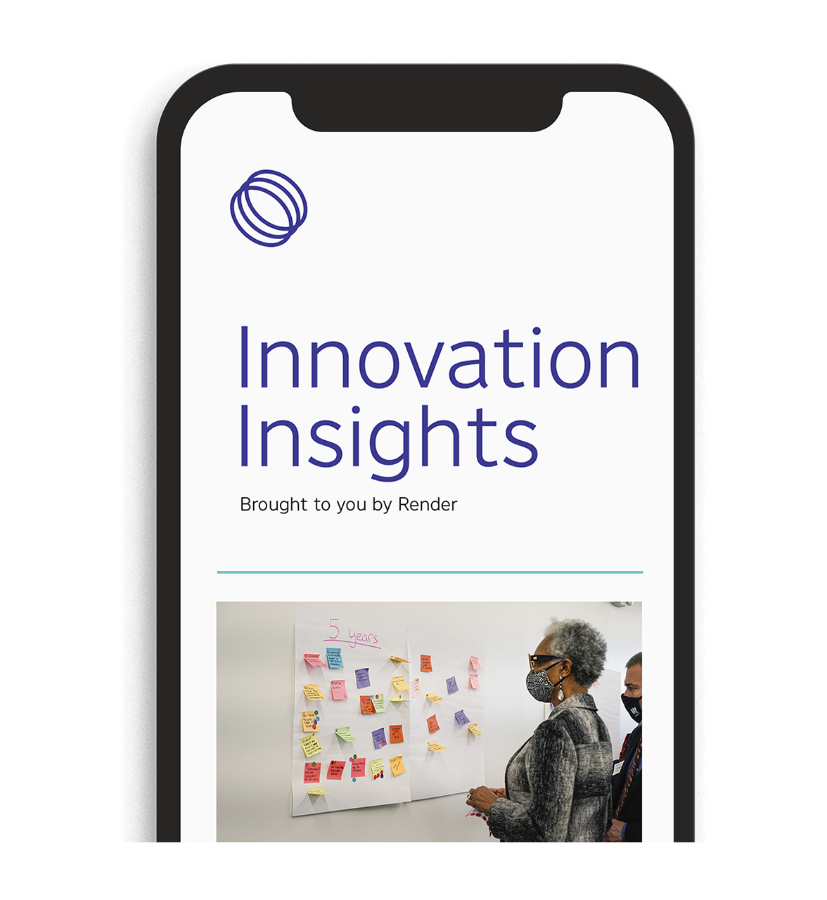Innovation has long been a C-suite buzzword, tossed around as a vague intention for future activities in vision statements and board rooms, but the pandemic has presented a real call to action: innovate or fall behind. 75% of companies surveyed in Boston Consulting Group’s “Most Innovative Companies” included innovation as one of their top three priorities — a 10% increase since the pandemic began. The same survey showed that companies who outstrip their peers in achieving innovation outcomes share something in common: C-level ownership of real innovation activities.
But where to start? The word “innovation” can conjure unknown levels of risk, and even worse — CHANGE — in the minds of many corporate executives and employees, likely because innovation can include a wide spectrum of activities. On one end of the impact spectrum, innovation could mean responding to market feedback by adding a new feature to a product or service — the success rate for these kinds of activities is high, but the impact is relatively low. This kind of incremental change can extend the market lifetime of a product, but it won’t transform your business.
On the other end of the spectrum is the kind of innovation that starts with consultants, requires millions of dollars, market studies, and board approval, and ends with a strategic_roadmap.ppt with a 7–10 year time horizon. The success rate for these endeavors is high and the impact can be significant, but the lack of flexibility and hefty investment required narrows their applicability and can be prohibitive.
Companies partner with IaaS providers to quickly surface challenges, tap into startup ecosystems locally or nationally, deploy solutions, and measure their impact.
Innovation as a Service (IaaS, not to be confused with Infrastructure as a Service) has emerged as an attractive middle ground between these two extremes, allowing companies to create impact in a short timeline and with low capital investment. Companies partner with IaaS providers to quickly surface challenges, tap into startup ecosystems locally or nationally, deploy solutions, and measure their impact. In essence, IaaS enables experiments that either fail fast or provide a clear path forward for increased engagement.
Large corporations often rely on legacy databases and systems, which although expensive and cumbersome, are essential for maintaining their current day-to-day business activities. When TechRepublic surveyed 1300 IT leaders, 62% identified integration of legacy systems as their biggest barrier to innovation. One of the most high-impact applications of IaaS is in modernizing these systems and workflows. Other ways to engage an IaaS provider include design/brand sprints, working sessions to prioritize innovation pipelines, and even in asset management and investment strategy.
At Render, we’ve seen firsthand that these experiments and engagement with startups often provide a potentially unexpected benefit to corporate partners: exposure to startup culture. Startups live and die by their ability to find product-market-fit quickly, reduce risk, re-focus in the face of new data, and maximize impact. These attributes are increasingly valued at larger businesses, and a strong strategy around culture has never been more important: it’s key to attracting top talent who may want the flexibility and creativity associated with startup work, but also the stability, considerable resources, and impact potential that a larger company enables.
According to the Harvard Business Review, 52% of fortune 500 companies have either “gone bankrupt, been acquired, or ceased to exist as a result of digital disruption”, and McKinsey reported that only “8% of companies said their current business model would remain economically viable if their industry keeps digitizing at its current course and speed.” Clearly, companies can benefit from highly-engaged leadership who are willing to embrace intentionality around innovation.






